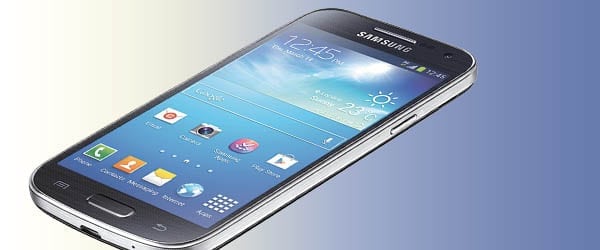
Constant Contact
The Latest High-tech Devices Keep Users Connected
It wasn’t too long ago that Americans used their cell phones essentially to, well, make phone calls, and maybe send text messages and take the odd photo or two.
How times have changed. We live in an era of constant communication, where the phone is now a device for staying connected to social media, making financial transactions, playing games, and engaging in 100 other activities guaranteed to keep people staring downward.
They’re called smartphones, and they have evolved over the past five years from a useful tool to a ubiquitous part of the way people interact. According to the Pew Research Center, 56% of all Americans own one (91% own a cell phone of some kind), and that percentage is constantly on the rise.
And that’s why BusinessWest begins its annual feature showcasing the newest and best-reviewed high-tech tools with a few of the leading choices in smartphones.
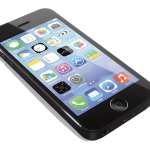 For starters, Apple’s iPhone continues to lead the pack. Business Insider calls the latest iteration, the iPhone 5S ($199+), the top choice among 2013 models. “Yes, it looks nearly identical to last year’s iPhone 5. Yes, there are plenty of other smartphones out there that are just as good and can do a lot more things. Yes, the screen is relatively tiny compared to a bunch of the giant Android phones out there. But that doesn’t matter,” the magazine notes, because the phone boasts an ideal balance of power, useful features, and design.
For starters, Apple’s iPhone continues to lead the pack. Business Insider calls the latest iteration, the iPhone 5S ($199+), the top choice among 2013 models. “Yes, it looks nearly identical to last year’s iPhone 5. Yes, there are plenty of other smartphones out there that are just as good and can do a lot more things. Yes, the screen is relatively tiny compared to a bunch of the giant Android phones out there. But that doesn’t matter,” the magazine notes, because the phone boasts an ideal balance of power, useful features, and design.
The new model adds a fingerprint sensor called Touch ID that unlocks the phone without a passcode, as well as an improved camera with a dual LED flash that helps the phone take better photos in low-light settings, and a new slow-motion video feature. And the phone’s new 64-bit processor is about twice as fast as the processor in the old iPhone 5.
“For now, the biggest drawback for iPhone owners is going to be big-screen envy,” the magazine notes. “Unless you absolutely must have a giant screen, the iPhone 5S is nearly perfect.”
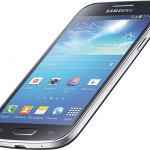 For Android enthusiasts, Business Insider heartily recommends the Samsung Galaxy S4 ($649) and HTC One ($599). “This summer, Google partnered with HTC and Samsung to make new ‘Google Play editions’ of those two flagship phones,” it notes.
For Android enthusiasts, Business Insider heartily recommends the Samsung Galaxy S4 ($649) and HTC One ($599). “This summer, Google partnered with HTC and Samsung to make new ‘Google Play editions’ of those two flagship phones,” it notes.
Why the hefty up-front costs? Instead of selling them through a wireless carrier, Google is selling the One and Galaxy S4 at full price, unsubsidized. With other phones, carriers typically subsidize the up-front savings through wireless-plan fees over a two-year contract.
In addition, the phones will receive software updates shortly after Google releases a new version of Android. “Historically, both HTC and Samsung have been pretty bad at getting new software updates out to customers because it takes a lot of time for them to modify Android,” the magazine notes. “And overall, Google’s clean version of Android is a lot better than the modifications you normally get from HTC and Samsung. There aren’t any preinstalled apps from HTC, Samsung, or your carrier.”
Business Insider gives a slighty edge to the One, calling it more attractive and fun to use than Samsung’s model. “These two phones are designed for people who don’t want to be locked down by carrier contracts and care about having the best Android experience you can get, all wrapped in excellent hardware.”
Consuming and Computing
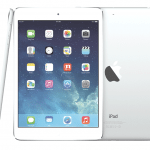 Smartphones are only one aspect of this on-the-go culture of constant communication and media consumption. Tablets are another.
Smartphones are only one aspect of this on-the-go culture of constant communication and media consumption. Tablets are another.
According to CNET, Apple’s iPad Air ($499-$539) delivers the best blend of performance and battery life in an attractive, thin, light package, with improvements in the front-facing camera and Retina Display. However, it lacks the Touch ID scanner available on the iPhone 5.
“Functionally, the iPad Air is nearly identical to last year’s model, offering only faster performance and better video chatting,” the site notes. “But factor in design and aesthetics, and the iPad Air is on another planet. It’s the best full-size consumer tablet on the market.”
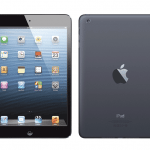 Meanwhile, those looking for something smaller and cheaper might try the iPad Mini ($399), also with Retina Display, a speedy A7 processor, and improved wi-fi and LTE connectivity, with battery life that’s as good or better than last year’s Mini. It also lacks Touch ID. Still, CNET notes, “the new iPad Mini somehow shrinks down the iPad Air into an even more compact package, sacrificing nearly nothing.”
Meanwhile, those looking for something smaller and cheaper might try the iPad Mini ($399), also with Retina Display, a speedy A7 processor, and improved wi-fi and LTE connectivity, with battery life that’s as good or better than last year’s Mini. It also lacks Touch ID. Still, CNET notes, “the new iPad Mini somehow shrinks down the iPad Air into an even more compact package, sacrificing nearly nothing.”
 For media consumption alone, CNET calls Amazon’s Kindle Fire HDX 8.9 ($379) “a performance monster that speeds through websites and UI navigation at a frantic pace. Its screen is impressively sharp and its body amazingly light for a larger tablet.”
For media consumption alone, CNET calls Amazon’s Kindle Fire HDX 8.9 ($379) “a performance monster that speeds through websites and UI navigation at a frantic pace. Its screen is impressively sharp and its body amazingly light for a larger tablet.”
Despite the lack (for now) of a remote video viewing feature, no built-in storage expansion beyond the included 16 GB, and lack of Google Play access, meaning many apps still aren’t available, the device “isn’t just a great value, it sets the standard for a media consumption tablet.”
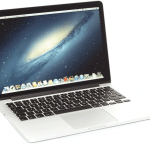 Laptop computers continue to advance in speed and performance as well, and the best of the current crop, according to laptopmag.com, is the MacBook Pro 13-inch ($1,299), featuring an impressive 2560-by-1600-pixel Retina Display. “A fourth-generation Intel Core i5 processor and blazing-fast Flash storage drive make the MacBook Pro with Retina display a speed demon, while a lightweight, 3.46-pound chassis and 9.5 hours of battery life let you carry it all day.”
Laptop computers continue to advance in speed and performance as well, and the best of the current crop, according to laptopmag.com, is the MacBook Pro 13-inch ($1,299), featuring an impressive 2560-by-1600-pixel Retina Display. “A fourth-generation Intel Core i5 processor and blazing-fast Flash storage drive make the MacBook Pro with Retina display a speed demon, while a lightweight, 3.46-pound chassis and 9.5 hours of battery life let you carry it all day.”
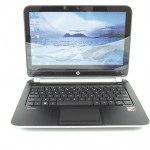 For consumers on a budget, the site’s top pick for 2013 is Hewlett Packard’s Pavilion TouchSmart 11z ($399), which combines a crisp, responsive 11.6-inch touchscreen with good battery life. While it’s not designed for heavy multitasking, offers narrow viewing angles, and is somewhat heavy for an 11-inch notebook, the speedy A4 processor, 320-GB hard drive, and 4 GB of RAM more than make up for those shortcomings, at least for the price.
For consumers on a budget, the site’s top pick for 2013 is Hewlett Packard’s Pavilion TouchSmart 11z ($399), which combines a crisp, responsive 11.6-inch touchscreen with good battery life. While it’s not designed for heavy multitasking, offers narrow viewing angles, and is somewhat heavy for an 11-inch notebook, the speedy A4 processor, 320-GB hard drive, and 4 GB of RAM more than make up for those shortcomings, at least for the price.
Image Is Everything
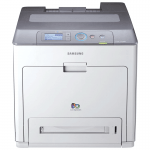 Printers come in a wide variety of price points, depending on the user’s needs for features and performance. Toward the higher side, Samsung’s CLP-775ND Laser Printer ($750) is the current favorite of PC World, which notes that “it breaks no new ground in output quality — photos are a challenge for it, as they are for most color lasers — but it’s fast and well-equipped, and its toner is economical.”
Printers come in a wide variety of price points, depending on the user’s needs for features and performance. Toward the higher side, Samsung’s CLP-775ND Laser Printer ($750) is the current favorite of PC World, which notes that “it breaks no new ground in output quality — photos are a challenge for it, as they are for most color lasers — but it’s fast and well-equipped, and its toner is economical.”
Standard features include automatic duplexing, a 500-sheet main input tray, a 100-sheet multi-purpose tray for envelopes and other thicker media, and a 350-sheet output tray, with room to add up to two more bottom-mounted, 500-sheet feeder trays. On the minus side, the transfer belt — a page-wide plastic band that helps convey toner from the cartridge to the paper — is fully exposed when the printer’s front panel is open, “just asking you to drop something on it.”
Still, with a 600 MHz dual-core processor and 384 MB of memory (expandable to 896 MB), the CLP-775ND posts a fast time of 18.1 pages per minute printing plain text, while color photos come out quicker than average, even though the quality of those pictures is pedestrian.
On the budget end of the printer scale, “the $300 range offers an interesting either/or choice: high-end color inkjets with full feature sets, for small-office or high-end home use, and very low-end lasers for small or home offices,” PC World notes. “But note that, while you can get a pretty nice monochrome laser for $300, a like-priced color model will be slow, lacking in features, and expensive to replenish.”
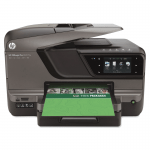 That said, the magazine’s top pick in this range is HP’s Officejet Pro 8600 Plus ($300), which boasts speed, at 13.2 pages per minute of plain text, and quick performance with printing photos, copying, and scanning. Meanwhile, features include universal automatic duplexing for copying, scanning, and printing, and full support of legal-size paper.
That said, the magazine’s top pick in this range is HP’s Officejet Pro 8600 Plus ($300), which boasts speed, at 13.2 pages per minute of plain text, and quick performance with printing photos, copying, and scanning. Meanwhile, features include universal automatic duplexing for copying, scanning, and printing, and full support of legal-size paper.
However, it can’t print on a CD or DVD, and its touch controls can be slow to react. Still, it does print from a smartphone or tablet, or from a remote location, through HP’s free ePrint service.
 Speaking of photos, digital cameras continue to evolve at a wide variety of price points. For those willing to foot the bill, PC Magazine highly recommends the Fujifilm X100S ($1,299), the follow-up to Fuji’s groundbreaking X100 digital camera.
Speaking of photos, digital cameras continue to evolve at a wide variety of price points. For those willing to foot the bill, PC Magazine highly recommends the Fujifilm X100S ($1,299), the follow-up to Fuji’s groundbreaking X100 digital camera.
The camera, like its predecessor, boasts a retro design, as well as a hybrid viewfinder system that can toggle between a big, bright optical view and an electronic viewfinder, as well as a fast lens with a 35-mm (full-frame equivalent) field of view. “The sensor has been upgraded to a 16-megapixel X-Trans CMOS design that is capable of producing some incredible results at extremely high ISO settings, and a notoriously sluggish autofocus system is now a reasonably quick one.”
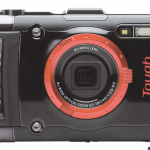 For significantly less money, PC Magazine called the Olympus Tough TG-2 iHS a solid option at $379. Like its predecessor, the Tough TG-1 iHS — which the magazine described as “a compact shooter with a fast lens that could shoot deep underwater and survive drops, pressure, and extreme temperatures,” while taking great photos in all types of light — the new model makes a few modest upgrades at a lower price. “We haven’t seen another rugged camera that could challenge the TG-1,” it noted, making the TG-2 the logical choice for 2013.
For significantly less money, PC Magazine called the Olympus Tough TG-2 iHS a solid option at $379. Like its predecessor, the Tough TG-1 iHS — which the magazine described as “a compact shooter with a fast lens that could shoot deep underwater and survive drops, pressure, and extreme temperatures,” while taking great photos in all types of light — the new model makes a few modest upgrades at a lower price. “We haven’t seen another rugged camera that could challenge the TG-1,” it noted, making the TG-2 the logical choice for 2013.
Joseph Bednar can be reached at [email protected]





